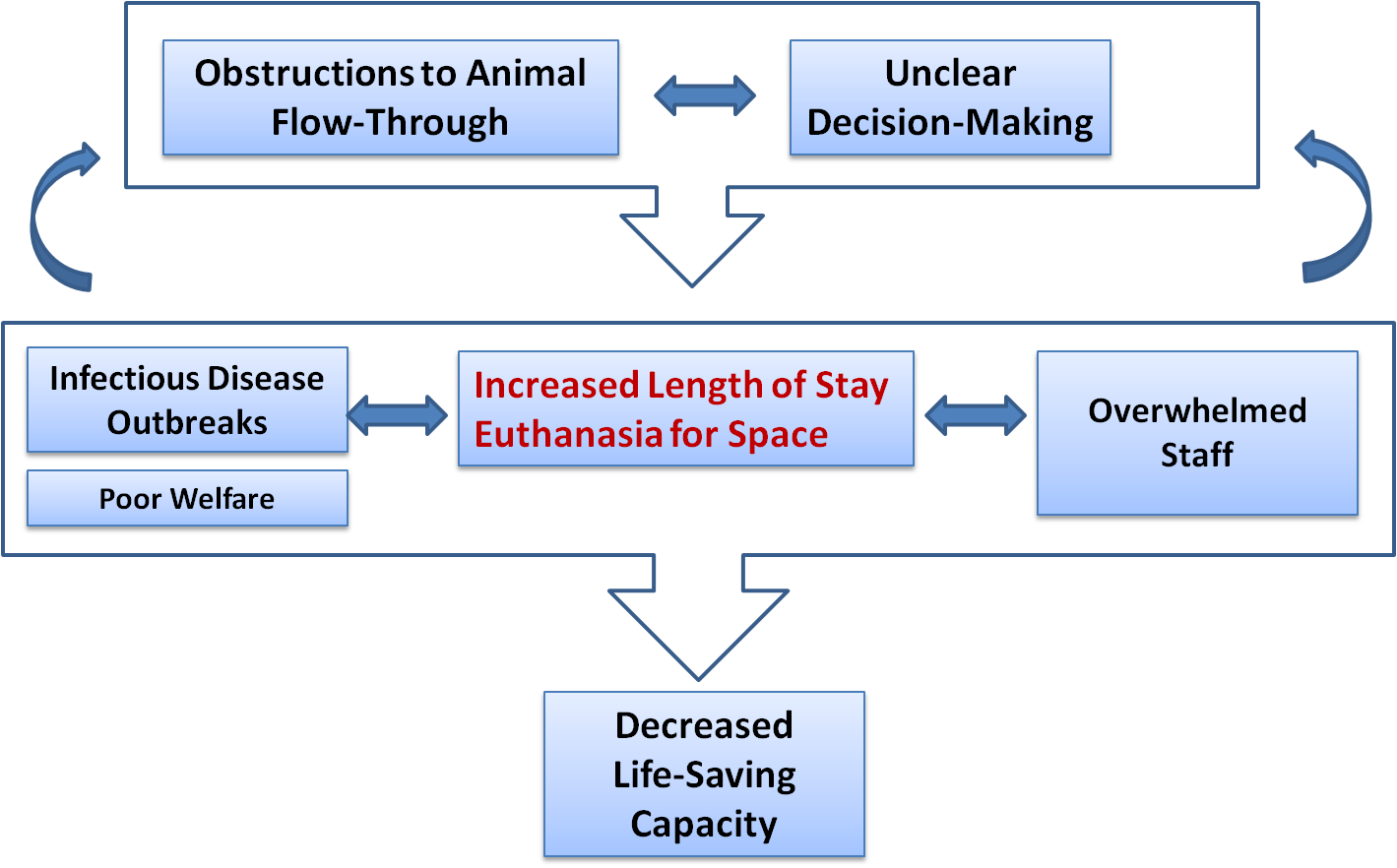Module 6: The Case of the Overwhelmed Shelter
What is Capacity for Care?
According to the ASV Guidelines, “Every sheltering organization has a maximum capacity for care, and the population in their care must not exceed that level.” Operating beyond this maximum capacity for care is considered an UNACCEPTABLE and inhumane practice.
Capacity for care essentially means that the needs of every animal in the shelter are met to provide the Five Freedoms and the Five Domains of Welfare. Animals in shelters that operate within their capacity for care stay in humane housing that supports good health and welfare, receive appropriate medical care, and move toward their best possible outcome without delays. Timely movement from admission to outcome is facilitated by a proactive population management process that identifies and removes any barriers to flow-through, thereby reducing in-shelter stay to the shortest time possible.
Here’s what happens when a shelter operates beyond its capacity for care:

How can you determine a shelter’s capacity for care? There are some basic calculations to determine capacity for care. The most important are:
- Housing capacity
- Required stray holding capacity
- Adoption-driven capacity
- Staffing capacity for basic care
- Average length of stay
These calculations depend on shelter population data collected in a consistent way, recorded using agreed upon definitions, and analyzed using standard formulas. Quality data are needed to understand the capacity for care status and guide effective decision-making to bring the shelter within their capacity and maintain it. Analysis of quality data drives planning based on facts rather than emotions and opinions. Because shelters are rightly concerned with looking their best to the public, it is important for shelter veterinarians to fully understand how shelter population data are collected, reported, and calculated. Numbers can be misleading.

